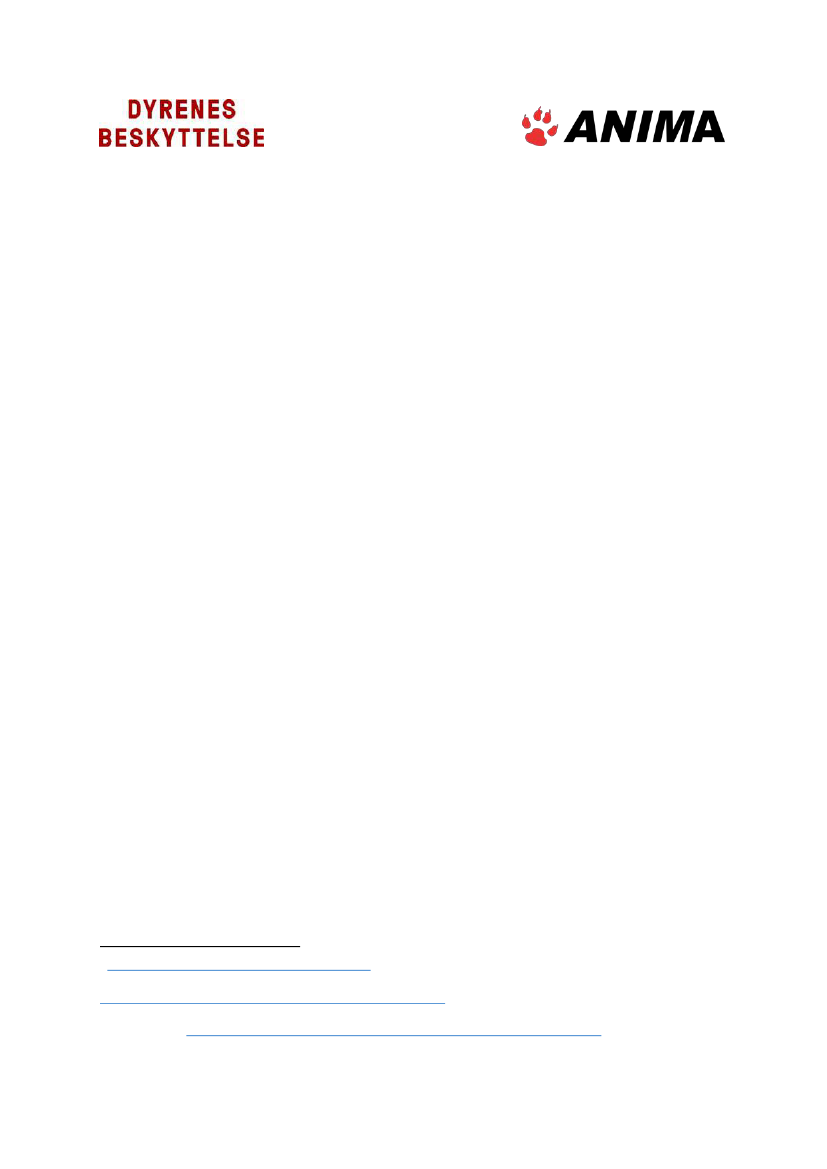
January 7
th
, 2021
Re: SARS-CoV-2 reservoirs on mink farms and call for EU action
Dear Minister Rasmus Prehn,
As the COVID-19 pandemic continues to rage across Europe, the undersigned organisations are hereby
calling on your support to urge the European Commission to adopt precautionary emergency
measures and take a harmonised EU approach with regard to COVID-19 on mink fur farms.
In recent months, the continuation of mink farming during this pandemic has generated growing
concerns, as COVID-19 has affected more than 370 mink farms in at least nine Member States. It is
crucial that the EU provides a strong and harmonised response to this critical public health issue.
Nature and scale of the problem
Mink are highly susceptible to SARS-CoV-2. The latest scientific studies demonstrate that American
mink, as well as raccoon dogs,
1
can act as a reservoir for the SARS-CoV-2 virus. It is therefore evident
that mink
–
and most likely also raccoon dog - farming creates a potential reservoir for SARS-CoV-2
and future strains of the coronavirus. The virus can jump back and forth between humans and mink,
with the potential for the virus to mutate in mink prior to infecting humans with new variants.
2
In April 2020, the first cases of SARS-CoV-2 were identified on mink farms in the Netherlands. In the
months since, coronavirus outbreaks have continued to affect hundreds of mink farms not only in the
Netherlands, but also in Denmark, Sweden, Greece, Spain, Italy, France and, most recently, new
infections have been identified on mink farms in Poland and Lithuania.
Given that the rapid and uncontrolled spread of SARS-CoV-2 on mink farms has not been halted by
the implementation of biosecurity measures, the animals have become the source of viral
transmission to people; not only those who work on fur farms occupationally, but also the broader
human community. Even more alarmingly, the uncontrolled spread in mink has also increased the
opportunity for the virus to evolve and develop potentially dangerous mutations. Evidence available
on SARS-CoV-2 variants related to mink indicates that these variants are able to circulate rapidly on
mink farms and the human communities close to the farms.
3
In Denmark, a mutation has been found in mink that may have led to a reduced response to antibodies.
Apart from Denmark and The Netherlands, mink-related mutations in humans have also been found
in South Africa, Switzerland, the Faroe Islands, Russia, Canada and the United States.
4
1
2
3
4
https://wwwnc.cdc.gov/eid/article/26/12/20-3733_article
Transmission of SARS-CoV-2 on mink farms between humans and mink and back to humans. Science, 10 November 2020:
https://science.sciencemag.org/content/early/2020/11/09/science.abe5901
European Centre for Disease Prevention and Control. Detection of new SARS-CoV-2 variants related to mink
–
12 November 2020. ECDC:
Stockholm; 2020. .
https://www.ecdc.europa.eu/en/publications-data/detection-new-sars-cov-2-variants-mink
Recurrent mutations in SARS-CoV-2 genomes isolated from mink point to rapid host-adaptation
Lucy van Dorp, Cedric CS Tan, Su Datt Lam, Damien Richard, Christopher Owen, Dorothea Berchtold, Christine Orengo, François Balloux